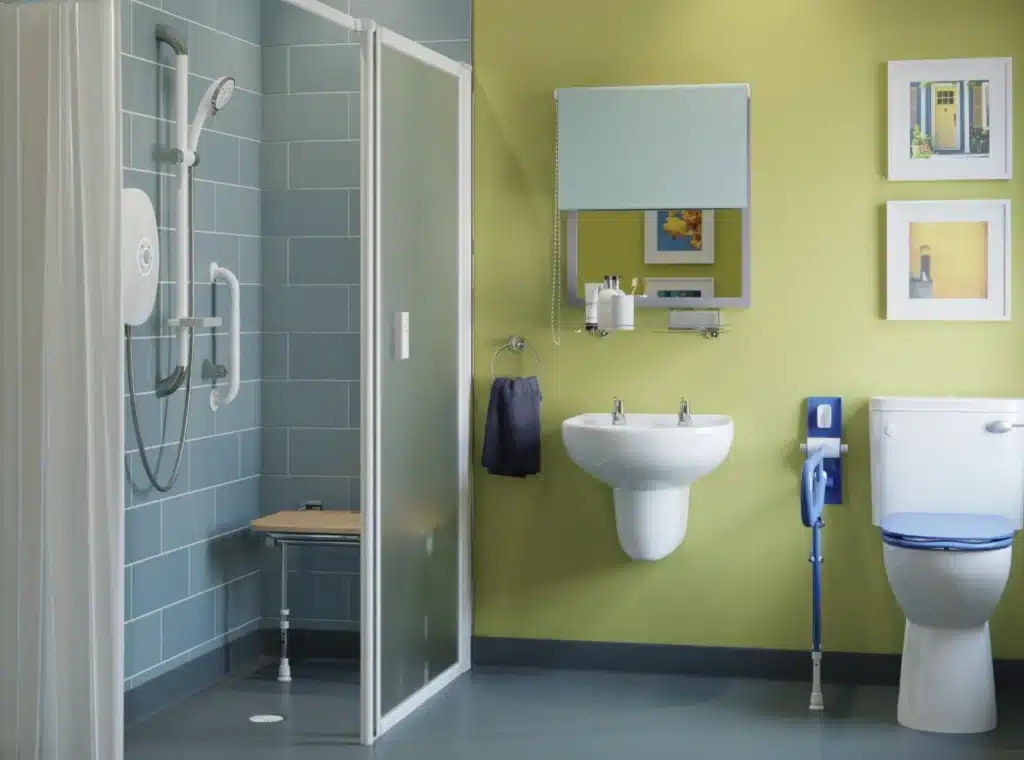What You’ll Learn
✔️ What independence actually means for disabled adults, according to global standards
✔️The everyday and structural barriers that make independence harder than it should be
✔️Practical tips for empowering disabled adults to make the home more accessible, especially bathrooms
✔️How tech can support decision-making, communication, and mobility
Independence Means Control—Not Isolation
Independence is often misunderstood. For disabled adults, it doesn’t mean doing everything alone—it means having control over daily life, including how and where to live, who to interact with, and how support is provided.
The United Nations Convention on the Rights of Persons with Disabilities (UNCRPD) is clear about this. Article 19 states that disabled people have the right to live independently and be included in the community, with access to the same choices as everyone else.
UK guidance echoes this. According to the Equality and Human Rights Commission, independent living means “having the same choice, control and freedom as any other citizen.”
However, in reality, that level of autonomy isn’t possible without addressing the barriers ingrained in society.
Common Challenges: Everyday and Structural
Many of the challenges disabled adults face are not due to impairments, but because environments, systems, and attitudes haven’t adapted.
At Home
- Standard bathrooms, kitchens, and hallways often assume you are a certain height, strength, or mobility.
- Limited funding or long waiting lists make home adaptations hard to access.
- Equipment like grab rails or adapted sinks is often treated as a “nice-to-have” instead of an essential.
In the Community
- Public transport may be theoretically “accessible” but unusable in practice due to broken lifts, poor signage, or inconsistent staff training.
- Social events, cafes, and entertainment venues still lack basic access, like level entrances or accessible toilets.
- A lack of accessible transport can increase social isolation, especially in rural areas.
Cultural Assumptions
- Independence is often equated with doing things “unaided,” ignoring the value of personal assistants, assistive tech, or shared living.
- Some services still approach disability through a medical lens, focusing on diagnosis rather than adapting environments or offering choice.
🗝️ Making Independence Possible: Practical Tips
So, how do you support real independence? Start by removing barriers, not adding pressure to “be independent.” Here are some realistic, practical ways to help.
1. Make the Bathroom a Priority
Bathrooms can be one of the most disabling spaces if not adapted properly. But small changes can make a huge difference:
- Level-access showers remove the need to climb into a tub
- Shower chairs and wall-mounted fold-down seats support people with limited stamina or balance
- Raised-height toilets reduce the effort needed to transfer
- Lever-style taps and touch-free controls help those with reduced grip
- Grab rails and non-slip flooring improve safety and confidence
Mobility bathrooms should be designed not just to meet building regulations but to actually work for the person using them. Every detail counts—from where the mirror is placed to the layout of shelves.
See more practical bathroom adaptations at Age Care Bathrooms.

2. Use Tech to Increase Autonomy
Assistive technology doesn’t have to be high-tech or expensive. It just needs to work for the person using it.
Smart home systems can automate lights, curtains, or heating, helping people control their environment without needing physical access.
Video doorbells and intercoms offer extra safety and ease when answering the door.
Voice assistants like Alexa or Google Home can set reminders, play music, or make calls.
Wheelchair-friendly apps like AccessAble help plan days out with accurate access info.
Importantly, tech should support decision-making, not take it away. Always ensure the person using the device has control over how it’s set up and used.

3. Involve the Person, Not Just the Equipment
Any changes—whether at home or in daily routines—should be shaped by the disabled adult, not just installed around them.
- Ask what works and what doesn’t in their current setup
- Be prepared to adjust over time as needs or preferences change
- Avoid cookie-cutter solutions; independence is deeply personal
📄 Frequently Asked Questions
What does independence mean for disabled adults?
Independence is about having choice and control over your life, not about doing everything alone. It comes from having access to the right support, services, and environments that make freedom and dignity possible.
How can I make a bathroom more accessible?
Start with practical changes like a level-access shower, grab rails, a raised toilet, and non-slip flooring. Adaptations should be based on the person’s mobility and daily routines, rather than generic checklists.
What tech can support independent living?
Smart speakers, automated lighting, video doorbells, and accessible apps can give more control at home and in the community.
Is assistive equipment enough to support independence?
Equipment helps, but it’s only one part of the picture. True independence also relies on accessible housing, inclusive attitudes, dependable transport, and opportunities for social connection.
References
- United Nations Convention on the Rights of Persons with Disabilities (UNCRPD)
https://www.un.org/development/desa/disabilities/convention-on-the-rights-of-persons-with-disabilities.html - Equality and Human Rights Commission – Article 19: Living Independently and Being Included in the Community
https://www.equalityhumanrights.com/en/human-rights-act/article-19-right-live-independently-and-be-included-community - Scope UK – Independent Living
https://www.scope.org.uk/advice-and-support/independent-living/
🚿 Independence Starts at Home
The right bathroom design can mean fewer barriers, more comfort, and greater control over your day. Age Care Bathrooms works with you to make that possible.
📞 Call 0800 999 8994
or
💬 Contact us today
to create a bathroom that works for you—not against you.
